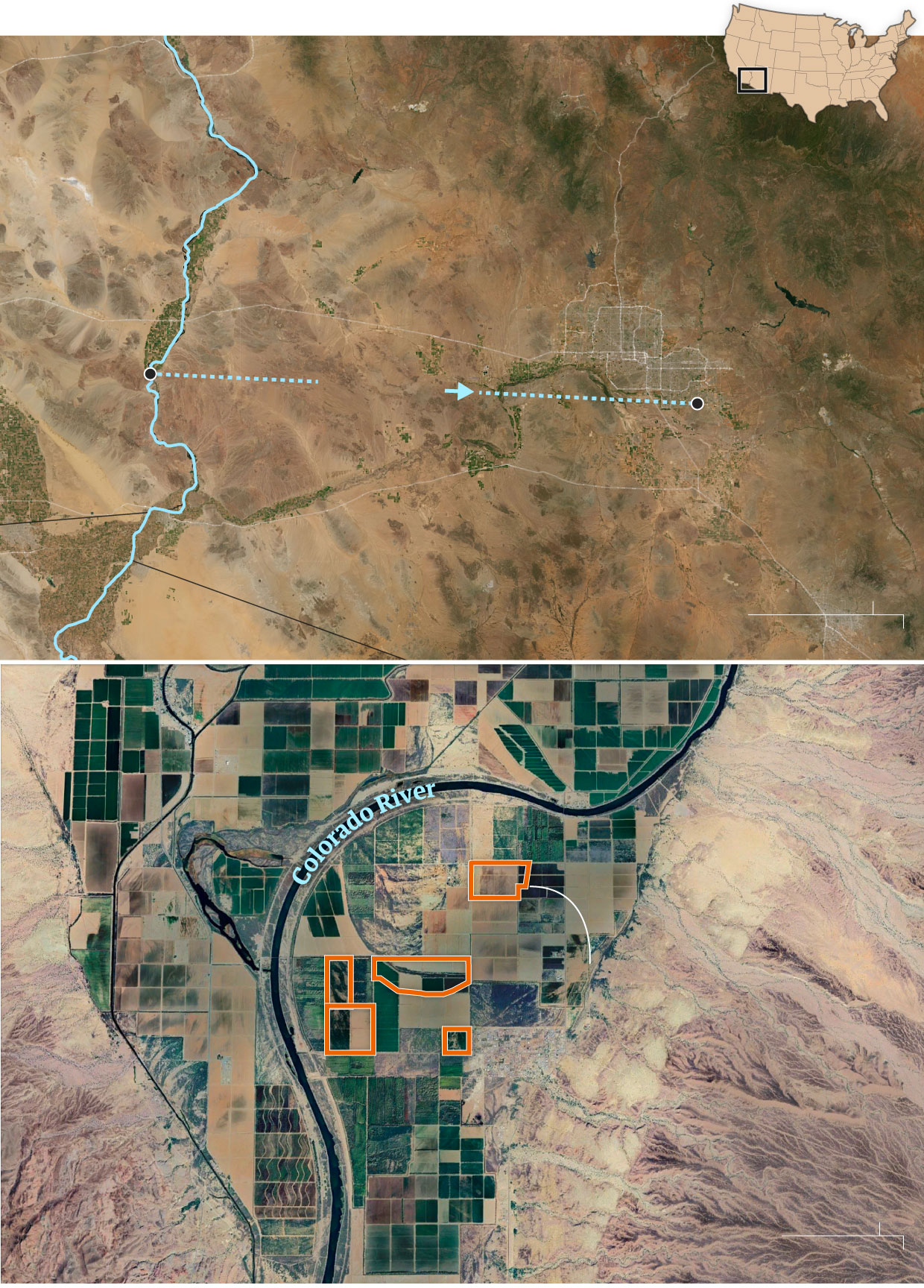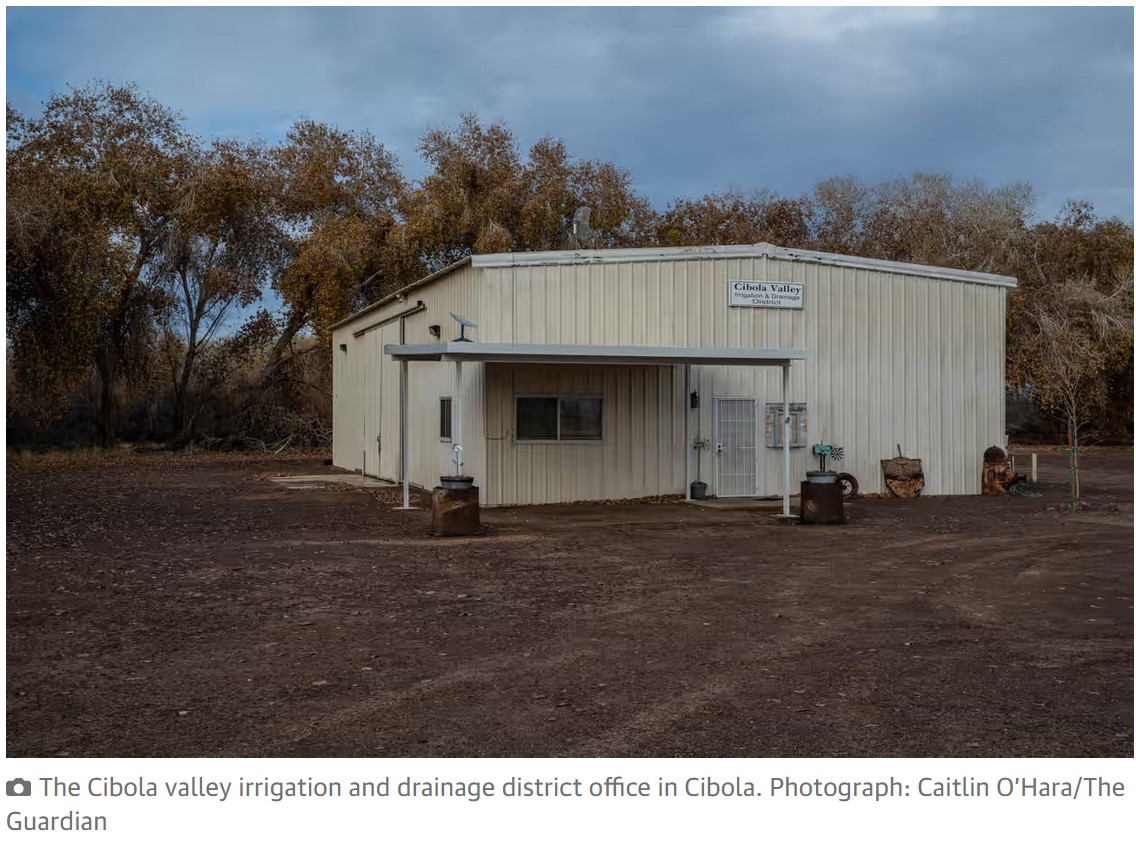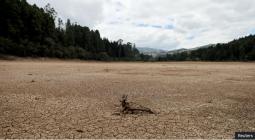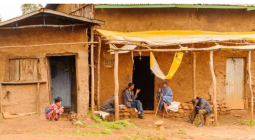‘Water is more valuable than oil’: the corporation cashing in on America’s drought

One of the biggest battles over Colorado River water is being staged in one of the west’s smallest rural enclaves.
Tucked into the bends of the lower Colorado River, Cibola, Arizona, is a community of about 200 people. Maybe 300, if you count the weekenders who come to boat and hunt. Dusty shrublands run into sleepy residential streets, which run into neat fields of cotton and alfalfa.
Nearly a decade ago, Greenstone Resource Partners LLC, a private company backed by global investors, bought almost 500 acres of agricultural land here in Cibola. In a first-of-its-kind deal, the company recently sold the water rights tied to the land to the town of Queen Creek, a suburb of Phoenix, for a $14m gross profit. More than 2,000 acre-feet of water from the Colorado River that was once used to irrigate farmland is now flowing, through a canal system, to the taps of homes more than 200 miles away.
A Guardian investigation into the unprecedented water transfer, and how it took shape, reveals that Greenstone strategically purchased land and influence to advance the deal. The company was able to do so by exploiting the arcane water policies governing the Colorado River.
Experts expect that such transfers will become more common as thirsty towns across the west seek increasingly scarce water. The climate crisis and chronic overuse have sapped the Colorado River watershed, leaving cities and farmers alike to contend with shortages. Amid a deepening drought and declines in the river’s reservoirs, Greenstone and firms like it have been discreetly acquiring thousands of acres of farmland.
As US states negotiate how they will divide up the river’s dwindling supplies, officials challenging the Greenstone transfer in court fear it will open the floodgates to many more private water sales, allowing investors to profit from scarcity. The purchases have alarmed local residents, who worry that water speculators scavenging agricultural land for valuable water rights will leave rural communities like Cibola in the dust.
“Here we are in the middle of a drought and trying to preserve the Colorado River, and we’re allowing water to be transferred off of the river,” said Regina Cobb, a former Republican state representative who has tried to limit transfers. “And in the process, we’re picking winners and losers.”
In February, a federal judge ruled that the Cibola-Queen Creek transfer was done without proper environmental review, ordering the federal Bureau of Reclamation to complete a more thorough evaluation. The US Department of Justice, which is representing the bureau in the legal proceeding, declined to comment on whether the bureau would be appealing the decision.
Meanwhile, Greenstone – which appears to be the first water brokerage firm to sell rights to the Colorado River – could help chart the course of how the resource can be bought and sold in the west.
The farm that was really an investment firm
Greenstone first arrived in Cibola a decade ago – though few here knew anything of the company at the time. Through a subsidiary called GSC Farm LLC, the company purchased 485 acres of land in the Cibola valley in 2013 and 2014, for about $9.8m. Hardly anyone in town took notice.
“Why would we?” said Holly Irwin, a supervisor for La Paz county, which encompasses Cibola.

Photograph: Mario Tama/Getty Images
Initially, Greenstone leased that land back to farmers, who planted fields of alfalfa and rows of puffball cotton.
Then, in 2018, the company sold the water tied to that farmland to Queen Creek, a fast-growing sprawl of gated communities on the outskirts of Arizona’s capital. The city’s government agreed to pay the company $24m for the annual entitlement to 2,033 acre-feet of Colorado River water.
In July of last year, amid continuing legal challenges and national scrutiny, that water was finally diverted. The alfalfa and cotton fields were fallowed – reduced to dry brush and cracked earth.
Many in town were blindsided. “We were all just like: what the heck?” Irwin recalled.
GSC Farm, she realized, wasn’t really a farm at all – it was part of a water investment firm that had brokered water transfer deals all across the south-west.
GSC Farm is one of at least 25 subsidiaries and affiliates of Greenstone, registered in Arizona and other states. Business registration records, deeds, loan documents and tax records show that these companies share the same executives. To local residents, including elected officials such as Irwin, it was initially unclear that the business – which had been acquiring thousands of acres of farmland not only in Cibola but across Arizona – went by so many names.
Greenstone’s executives and lawyers did not respond to the Guardian’s questions about the company’s corporate structure, its business model, and how it initiated the Queen Creek deal.
Public records revealed that Greenstone’s financial backers include the global investment firm MassMutual and its subsidiary Barings, as well as public pension funds. At least one of its acquisitions appears to be financed by Rabo AgriFinance, a subsidiary of the Dutch multinational banking and financial services company Rabobank.
On its website, Greenstone describes itself as “a water company” and as “a developer and owner of reliable, sustainable water supplies”. Its CEO, Mike Schlehuber, previously worked for Vidler Water Company – another firm that essentially brokers water supply – as well as Summit Global Management, a company that invests in water suppliers and water rights. Greenstone’s managing director and vice-president, Mike Malano – a former realtor based in Phoenix who remains “active in the Arizona development community”, per his company bio – got himself elected to the board of the Cibola valley irrigation and drainage district, a quasi-governmental organization that oversees the distribution of water for agriculture in the region.
Irwin was horrified. She felt that a company with ties to big banks and real estate developers, posing as a farm, had infiltrated her small town and sold off its most precious resource.
The deal won’t have an immediate impact on Cibola’s residents. It doesn’t affect the municipal water supply. But she worries that the transfer will be the first of many. And if more and more farms are fallowed to feed water to cities, what will become of rural towns along the river?
“It’ll be like Owens Valley,” she said, referring to the water grab that inspired the movie Chinatown. In the early 20th century, agents working for the city of Los Angeles, posing as farmers or ranchers, bought up land in the valley and diverted its water to sustain their metropolis, leaving behind a dustbowl.
By allowing the Greenstone deal to go through, “I’m afraid we’ve opened Pandora’s box,” she said.
The Colorado River, which stretches from the Rocky Mountains into Mexico, has declined by about 20% since the turn of the century, amid the most severe drought the west has seen in 1,200 years. In a painfully negotiated deal, Arizona, Nevada and California agreed to reduce the amount of water they draw from the river by 13% through 2026. Experts warned that even deeper cuts would be necessary in the coming decade, but states are currently deadlocked over a longer-term conservation plan.
“With ongoing shortages on the river, driven by climate change, Colorado River water is going to become very valuable,” said Rhett Larson, a professor of water law at Arizona State University. “Anyone who understands this dynamic thinks, ‘Well, if I could buy Colorado River water rights, that’s more valuable than owning oil in this country at this stage.’”
Though the price Queen Creek paid for the water was remarkable – amounting to more than $11,500 per acre-foot – lawyers and water experts in Arizona told the Guardian it would probably sell for even more today.
The process of selling and transferring the water, however, can be bureaucratic and complicated. In most cases, a company like Greenstone would have to first convince fellow landowners in their local irrigation district to allow the sale, and then secure approvals from the state department of water resources and the US Bureau of Reclamation, the federal agency that manages water in the west.
What Irwin and many of Cibola’s residents didn’t realize was that in their sleepy, riverside town, a select group of farmers and landowners had been working for years to facilitate such deals.

Guardian graphic. Sources: Google Earth, La Paz county assessor
‘His dream was to sell this water’
Irrigation districts, as the name suggests, are designed to distribute water for irrigation across the US west. These districts were formed in the 19th and 20th centuries as cooperatives, allowing farmers to pool resources to develop water infrastructure. In the Colorado River basin, the districts contract with the Bureau of Reclamation to deliver water flowing through federal infrastructure to farms and ranches.
Farmers tend to be possessive of their precious water, explained Susanna Eden of the University of Arizona Water Resources Research Center. Most irrigation districts are set up to keep water for farming – and to keep it within their jurisdictions.
But in the Cibola valley irrigation and drainage district (CVIDD), landowners seem to have anticipated the market potential of their water.
“It has been said, and I think it has been demonstrated, that the Cibola valley irrigation and drainage district was set up by people who were investing in water, rather than pure agriculturalists,” said Eden.
In 1992, long before Greenstone arrived on the scene, CVIDD amended its contract with the Bureau of Reclamation to explicitly contemplate “water exchange, water lease, water transfer” or a change in the “type or place of use” of its water allotment.
The CVIDD board president, Michael Mullion, a farmer in Cibola who had been leasing land from GSC Farm in addition to tending his own land, vouched for the Greenstone’s water transfer at a 2019 hearing with the state’s department of water resources. In his testimony, Mullion talked about how his grandfather had come to the Cibola valley in 1949. “He brushed, cleared, levelled and built the canals for this particular ground,” he said. “But his dream was to actually sell this water.”
The district’s governing philosophy already aligned with Greenstone’s, but the company’s 500-acre purchase here allowed it to more directly influence the district’s policies. Irrigation district boards make key decisions about water in the district – and buying more land can buy more influence on the board. Landowners in the district are entitled to two votes for every acre they hold in board elections.
The district’s board of directors now includes the heads of prominent farming families in the area, including Mullion and his father, Bob, as well as Greenstone’s vice-president, Malano.
Over the years, CVIDD helped landowners, including Greenstone, gain more agency and direct control over their water rights. In most irrigation districts, the district contracts with the Bureau of Reclamation for the right to a lump sum of water, which it distributes to landowners and farmers.
However, a review of CVIDD’s contracts with the bureau revealed that between 2006 and 2014, the district began removing itself as the middleman – giving a few large landowners even more agency over how they use their water. Whereas in other irrigation districts, members would have to vote to approve a water transfer like the Greenstone deal, in the Cibola valley, some landowners can propose transfers as they please, subject to federal approval.
Amid growing public scrutiny of the Cibola-Queen Creek transfer, the CVIDD board in 2019 unanimously approved a resolution disputing the idea that water rights are reserved for local use, and supporting landowners’ right to change “the place of use and purpose of use” of their water.
“I believe they’ve been setting the stage for the Queen Creek transfer,” said Jamie Kelley, an attorney based in Bullhead City. “This was their long-term plan.”
Mullion and lawyers representing CVIDD did not respond to the Guardian’s questions about its founding principles. They also did not address critiques that their policies were set up to benefit landowners seeking to sell water rights.
A community fights back
Even now, after years of public debate and litigation, local residents remain baffled by the idea that water could be sold and siphoned away from them, for ever.
Down a dusty, two-lane road, just past the unassuming cream-colored building where the Cibola valley irrigation district is headquartered, a group gathered for an informal meeting with Holly Irwin last summer to discuss their grievances.
“Why is somebody coming from so far away to take water from here?” said Carol Stewart, who runs Karlz Country Store – the only shop in town.
She hosted a handful of friends and neighbors, mostly retirees and recreators who had settled here decades ago. Everyone huddled into Stewart’s wood-paneled mobile home, a respite from the searing heat, and shouted their questions over the buzz of the AC. What did the transfer mean? Would they have enough water to supply homes here?
“It’s all about the mighty dollar,” Irwin said. “It’s all about money, and how much they can come in and take advantage.”
This deal wouldn’t affect the town’s residential water supplies, Irwin explained. But it meant that more and more farmers might choose to sell out – the water that once irrigated Cibola’s fields could be diverted away. And as the Colorado River shrank, corporations were growing increasingly thirsty for rural supplies.
“Don’t we have water rights?” asked John Rosenfeld, who has lived in Cibola for 24 years. “I have a right to that water, because I’m paying for it.”
It wasn’t quite that simple, Irwin responded. Most of Cibola’s residents get their water from a municipal supply or from private wells. But some properties here come with water rights attached, sometimes dating back to before Arizona was a US state. In the 1800s and the decades following, miners and farmers could snatch water rights up and down the Colorado River simply by laying claim to the water and putting it to use for livestock or irrigating land. It didn’t matter to these settlers that some of that water and land was taken from Indigenous tribes that were here before them.
Those water rights were then passed down from generation to generation. They were formalized in agreements and interstate contracts that left some farming regions and tribes with the highest-priority water rights, while other rural and metropolitan areas received lower-priority rights. Such contracts assign water rights a “priority level” of one through six – priorities one through four represent rights for permanent water service, whereas priorities five and six represent the temporary rights to surplus supplies. The water rights Greenstone purchased in Cibola and sold to Queen Creek are fourth priority – permanently secured and prized.
Notably missing from the group at Karlz Country Store were farmers. The Guardian tried to contact a number of farmers in the region, but other than Mullion, none were available for an interview. Not all agriculturalists are interested in selling their water – but the option may be increasingly appealing as the climate crisis and water shortages disrupt their ability to farm effectively. “It’s hard to know, but demands create pressure,” said Wade Noble, an attorney representing farmers with the Wellton-Mohawk irrigation and drainage district, north of Cibola. “The drought on the river has created very high pressure.”
Greenstone isn’t the only company coveting such water rights. Across the US west, private investors have been scouring rural communities in search of high-priority water rights. In Arizona, Greenstone and firms like it have acquired thousands of acres of irrigable land and their corresponding water rights.
In the Cibola valley, for example, Western Water LLC, another company that specializes in “the sale and transfer of water rights”, owns about 100 acres of land, along with its entitlement to a modest 620 acre-feet of water, public records from the Bureau of Reclamation and La Paz county showed.

Before the Bureau of Reclamation approved Greenstone’s water transfer to Queen Creek, an investigation by the Arizona Republic found that Greenstone and its competitors had acquired thousands of acres of irrigable land across Arizona, including in La Paz, Pinal, Maricopa, Mohave and Yuma counties. The newspaper’s reports were cited by local officials who argued that Greenstone’s water transfer to Queen Creek would be a harbinger of many more such deals, as water becomes increasingly scarce across the west.
A Guardian review of deeds and other public records found that in Yuma county, companies associated with Greenstone hold about 5,300 acres of farmland, much of it within the Wellton-Mohawk irrigation and drainage district. Taxes on those lands were paid by Sunstone Farms LLC, a Greenstone subsidiary that leases agricultural properties.
There, unlike in CVIDD, individual landowners cannot initiate water transfer agreements on their own. But because votes within Wellton-Mohawk are also weighted based on how much land someone owns, larger landowners could seek more influence on its board. County records indicate that a Greenstone-affiliated LLC is one of the largest landowners in the district.
Meanwhile to the north, in Mohave county, Greenstone’s competitor Water Asset Management holds more than 2,400 acres, and access to nearly 16,000 acre-feet of water, per public records from the county.
In 2022, La Paz along with Mohave and Yuma counties filed a lawsuit against the Bureau of Reclamation, challenging its claim that the deal would cause “no significant” environmental impact.
“We are arguing in our lawsuit that Reclamation did not analyze the precedent that this transfer set,” said John Lemaster, an attorney representing Mohave county. “The entire purpose of Greenstone is to develop and sell water resources. We know future transfers are likely.”
This year, a federal judge in Arizona sided with them, ruling that the Bureau of Reclamation’s environmental evaluation was “arbitrary and capricious” and ordering the agency to prepare a more thorough assessment. While it’s unclear how the agency will proceed, given that water is already flowing to Queen Creek, the outcome could define how future deals are made and who can lay claim to the Colorado River’s water.
Greenstone, meanwhile, has tried to play down the significance of the transfer.
At a March 2022 committee hearing to discuss a bill introduced by Cobb, the former state representative who tried to limit water transfers, Malano balked at descriptions of his company as a hedge fund, describing Greenstone as “one of the largest farming operations in the state of Arizona”.
Indeed, Greenstone and its competitors, such as Water Asset Management, often lease their land to farmers. But Greenstone’s ultimate goal, per its website, “is to advance water transactions”. And it has been busy doing so. In 2017, it helped secure the right to Rio Grande water for a Facebook data center in Los Lunas, New Mexico. While the Queen Creek deal was the company’s first sale off the Colorado River, it has also brokered a number of deals to supply groundwater to developing communities across Arizona.
In September, the state’s Democratic attorney general filed an amicus brief in support of the counties challenging the transfer. “Future transfers will be likely, if not inevitable,” Kris Mayes wrote, “given the need for water across Arizona.”
A building boom strains a dwindling resource
Queen Creek is growing fast.
Wide, tree-lined boulevards vine off into neat, master-planned communities named Harvest and Encanterra, featuring resort pools, lush golf courses and ornamental lakes. Beyond the sand-hued estates, which blend into the Sonoran landscapes, there is construction. Cranes clear ground, crews build wood frames through suburban cul-de-sacs in various states of completion.
Queen Creek was the seventh-fastest growing city in the US, according to a Census Bureau report released last year. It, like many Arizona suburbs, has struggled to balance a development boom with a shrinking water supply.
Last year, the state moved to limit new housing construction in the suburbs of Phoenix – one of the fastest-growing metro areas in the country – to avoid emptying the region’s underground aquifers. Projecting a 4.86m acre-foot shortfall in groundwater supplies over the next century, the state announced that all future housing developments in the desert would have to find some other source of water, by purchasing or importing their supply.
Ambitious cities and developers have been left scrambling.
The suburb of Buckeye, west of Phoenix, has considered building a desalination plant in the Mexican town of Puerto Peñasco and piping the treated water several hundred miles north to Arizona.
Queen Creek’s water manager, Paul Gardner, said the town had been working for years to secure water for its future. In addition to piping water from the Colorado River, the city has also sought to import groundwater from the Harquahala valley, to the east of Cibola. It recently signed a $30m deal with Harquahala Valley Landowners LLC, a company that represents farmers and investors with water rights, to siphon off 5,000 acre-feet of ground water a year to feed its maze of gated communities and sprawling subdivisions.
Meanwhile, in Cibola, Holly Irwin dreams of development too – though of a different sort.
On the east bank of the Colorado, she recently oversaw the cleanup and restoration of a stretch of open space for residents and visitors. “Now we have trash cans, we have picnic tables,” Irwin said. “My goal is we’ll have campsites that stretch all the way down. And more electrical hookups for RVs.”
In the summertime, she hopes, the river will be filled with boats and its shore with picnickers and campers. “We could attract more people, from all over.”
Stewart, the shop owner, first came here as a “weekender” from San Diego, California. She was drawn to the region’s rugged beauty and rural familiarity. “This was a place to roam, to be with family.”
In the decade since she and her family moved here, she has also seen the Colorado shrink, and its lush banks fade. “There’s been years when you could basically walk across the river,” she said. “That is what has scared a lot of people. We need the water here.”




